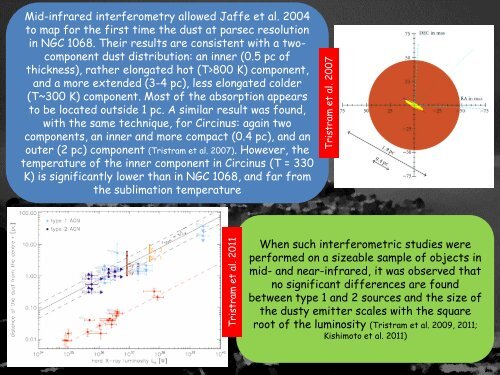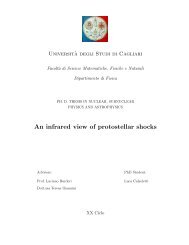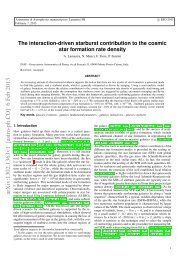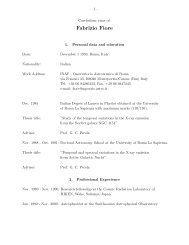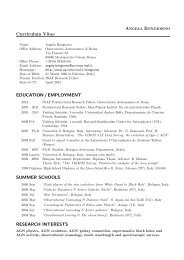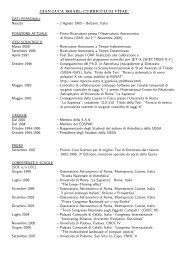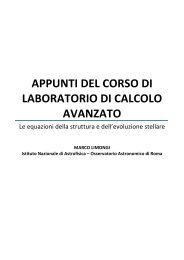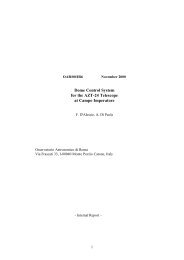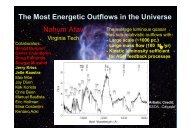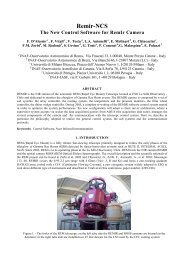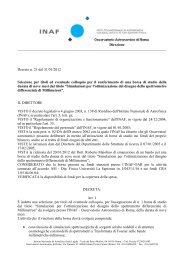The absorber - INAF-Osservatorio Astronomico di Roma
The absorber - INAF-Osservatorio Astronomico di Roma
The absorber - INAF-Osservatorio Astronomico di Roma
Create successful ePaper yourself
Turn your PDF publications into a flip-book with our unique Google optimized e-Paper software.
Tristram et al. 2011<br />
Tristram et al. 2007<br />
Mid-infrared interferometry allowed Jaffe et al. 2004<br />
to map for the first time the dust at parsec resolution<br />
in NGC 1068. <strong>The</strong>ir results are consistent with a twocomponent<br />
dust <strong>di</strong>stribution: an inner (0.5 pc of<br />
thickness), rather elongated hot (T>800 K) component,<br />
and a more extended (3-4 pc), less elongated colder<br />
(T~300 K) component. Most of the absorption appears<br />
to be located outside 1 pc. A similar result was found,<br />
with the same technique, for Circinus: again two<br />
components, an inner and more compact (0.4 pc), and an<br />
outer (2 pc) component (Tristram et al. 2007). However, the<br />
temperature of the inner component in Circinus (T = 330<br />
K) is significantly lower than in NGC 1068, and far from<br />
the sublimation temperature<br />
When such interferometric stu<strong>di</strong>es were<br />
performed on a sizeable sample of objects in<br />
mid- and near-infrared, it was observed that<br />
no significant <strong>di</strong>fferences are found<br />
between type 1 and 2 sources and the size of<br />
the dusty emitter scales with the square<br />
root of the luminosity (Tristram et al. 2009, 2011;<br />
Kishimoto et al. 2011)


